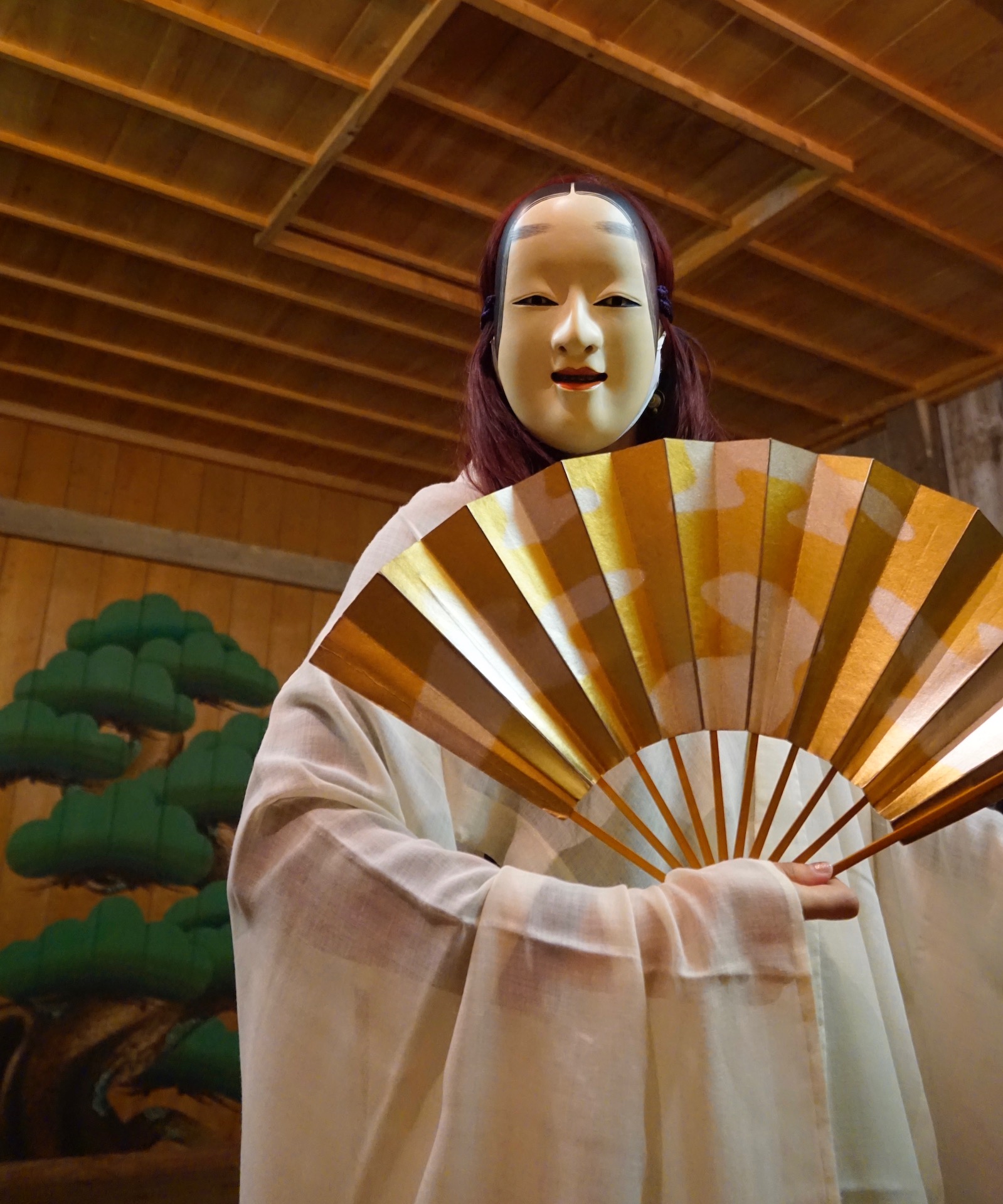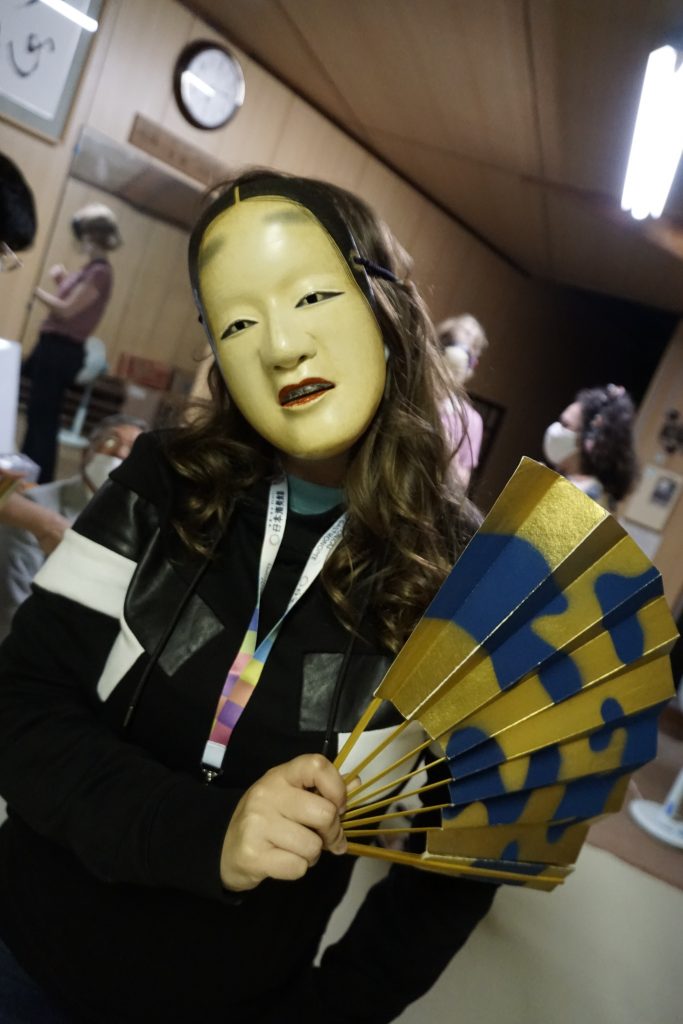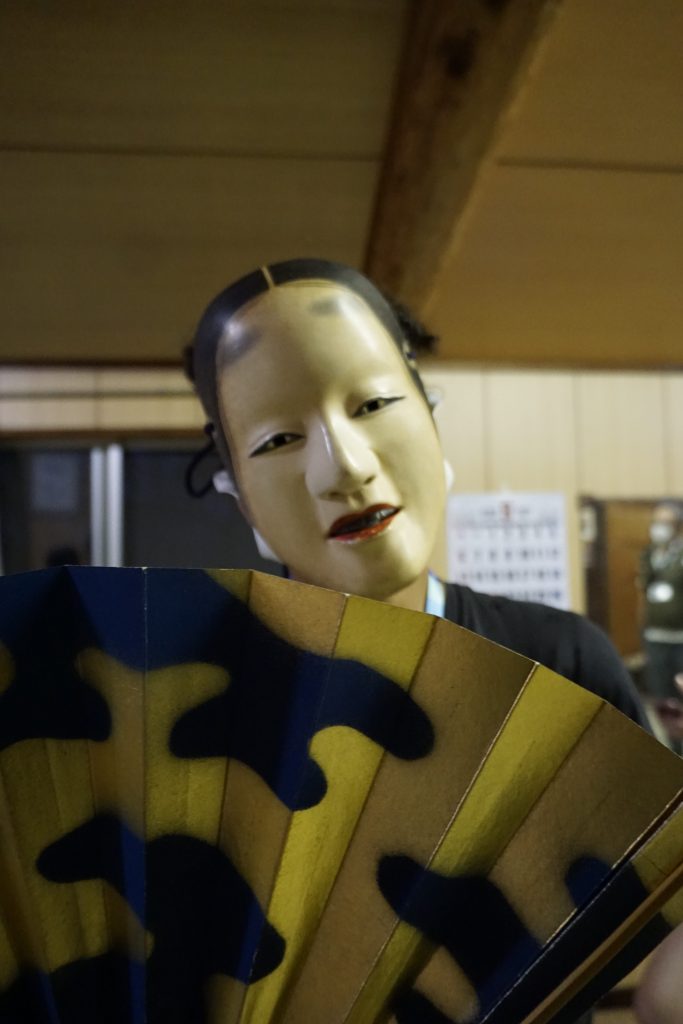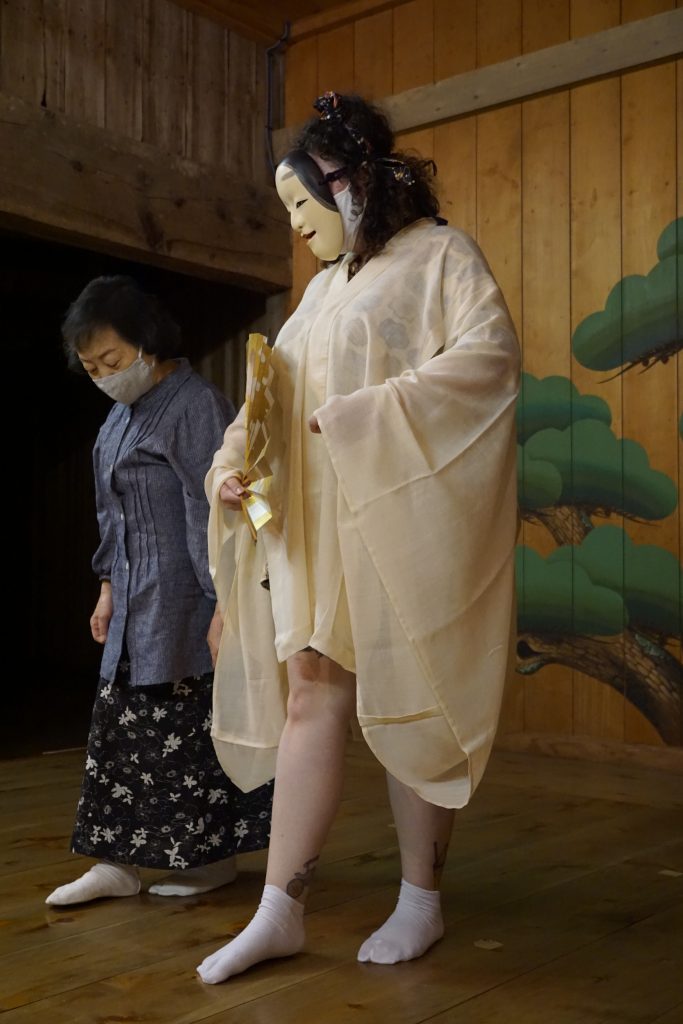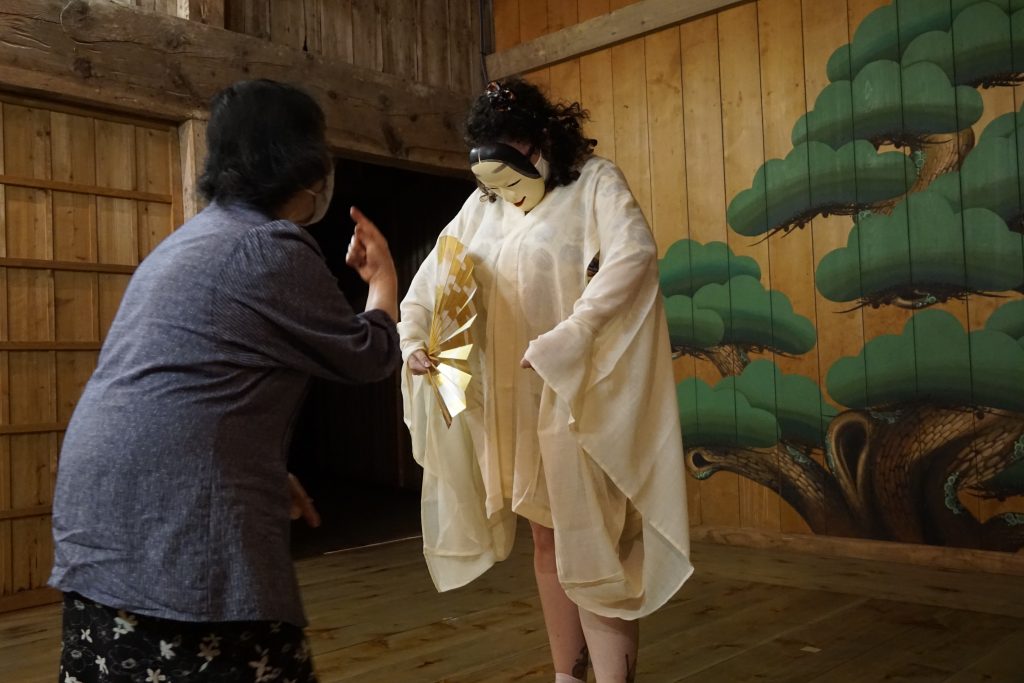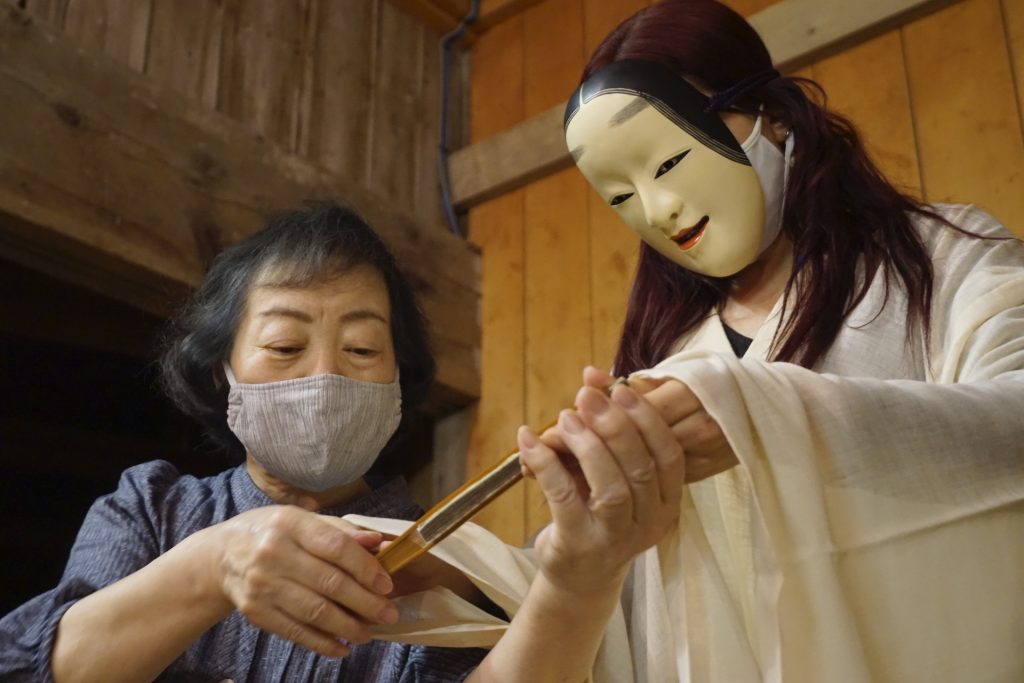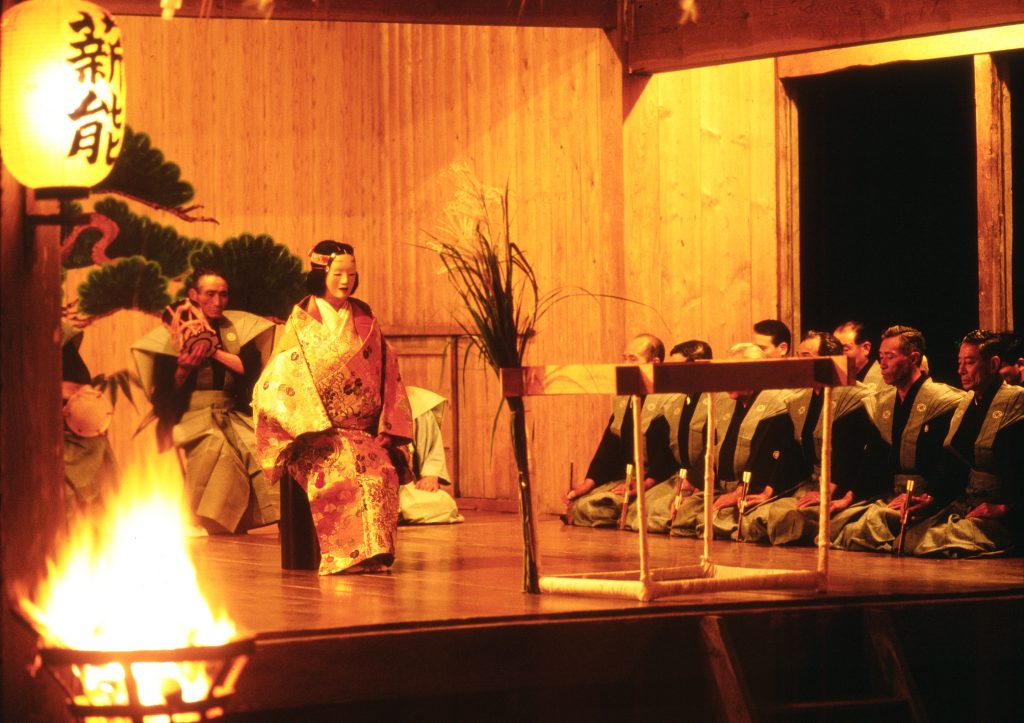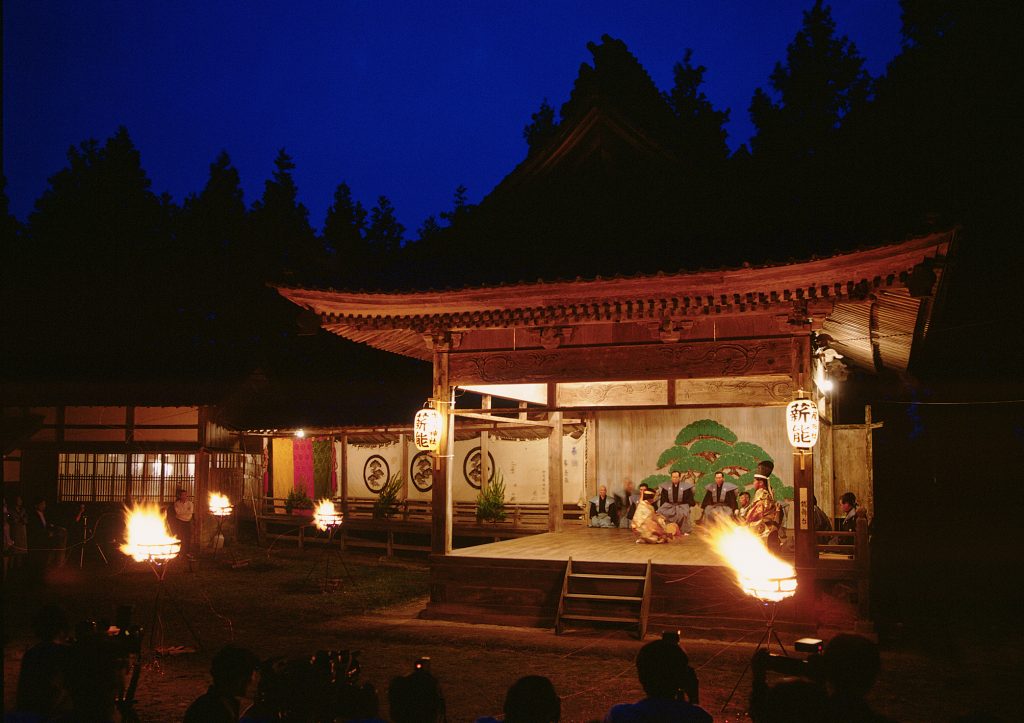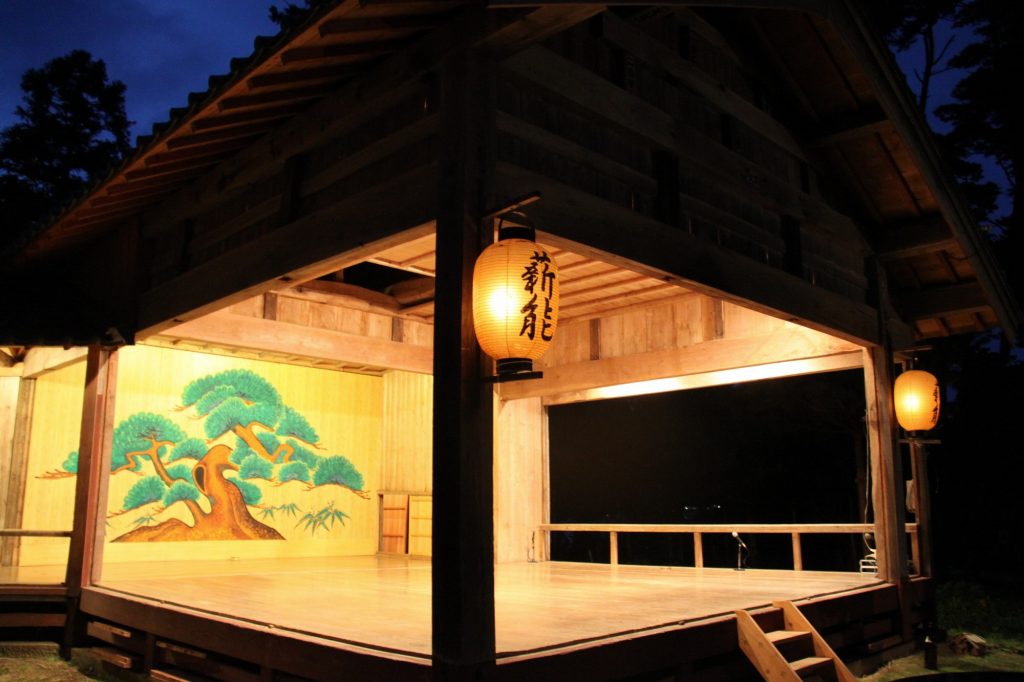This article originally featured in the November 2021 issue of Connect.
The story behind this unique form of theater and how a tiny island far from Tokyo became Japan’s preeminent center for Noh.
Kimberly Fitzgerald (Niigata)
“I think my nose is too big,” I laughed as the Noh actress gracefully accepted the mask I handed back to her. Made entirely of Japanese cypress, masks such as the one that crushed my American-sized nose have been worn by Noh actors since the 14th century. Instead of relying on facial expressions to convey emotion, Noh actors simply angle their faces to catch different lights. “It really does look like you’re sad when you look down,” said our interpreter, showing me some pictures of myself to look at.
The Noh actress assisting me adjust the mask was part of a small but dedicated troupe of Noh performers at Sado Island’s Kusakari Shrine and Noh stage. The Sado Tourism Association invited a group of Niigata-based JETs, myself included, to a tour of the island and a Noh theater workshop in hopes of bringing attention to these skilled performers trying to keep a traditional form of theater alive. As Japan’s fifth largest island, Sado boasts an impressive array of natural beauty, including terraced rice fields, rocky coves, and the largest lake in Niigata Prefecture, Lake Kamo.
The island is not only known for its nature, but also its rich history and culture—including Noh, a unique and underrated form of theater.
Sado Island was once a place of banishment. Starting possibly as early as the 6th century, the shogunate would send people who questioned their authority or didn’t succumb to their wishes to Sado. “People hear terms like ‘banishment’ and ‘exile’ and assume Sado was a place for criminals,” claimed our tour guide Tsukakoshi Takayuki, “but in reality it was more a land of intellectuals.” Intellectuals banished to Sado include ex-Emperor Juntoku, influential Buddhist priest Nichiren, and poet Hozumi no Asomi Oyu. Japan’s leading Noh actor, Zeami, also found himself there after losing favor with the shogunate.
It was Zeami’s father Kanami that turned Noh into the form of theater that it is today—theater based on songs and dances performed by actors wearing masks and ornate costumes. The stories unfold through a slow methodical dance arranged to musical elements and spoken word. It is said that profound meaning can be found in even the slightest movements of a Noh actor. The music features a wooden flute and various sized drums, as well as chanting. One unique aspect of Noh is that often the main character of a play is not a human being, but rather a ghost, god, or spirit.
However, in my opinion, one of the most iconic aspects of this form of theater is the masks. In Noh, the main character performs while wearing a mask. Hand-carved out of wood, many masks are highly valued as pieces of art—so much so that the actors assisting us in the Sado tour have separate masks for rehearsals and performances. The performance masks are just too precious to risk damaging while practicing.
The masks are traditionally carved to be expressionless, thus putting the onus on the actors’ own body movements to convey emotions. The eye holes of Noh masks are noticeably small, which greatly limits an actor’s visibility. Fortunately, the simple stage design and rare use of props helps reduce the risk of the actor walking into a cast member or off the stage.
While Zeami’s presence on Sado island certainly helped to bring Noh to the region, it was Okubo Nagayasu, the first magistrate of Sado, who was the character most responsible for the proliferation of Noh throughout the island. Okubo, a Noh actor himself, heavily patronized the art; during the time of Okubo’s governance, many Noh stages were built and troupes formed. (1)
Although Noh as an art form was traditionally performed only for the upper-class, Sado, lacking in upper-class citizens, allowed farmers and peasants to watch performances for free. Its popularity spread quickly throughout the island. According to Mr. Tsukakoshi, at the height of Noh on Sado, there were as many as 200 Noh stages on the island.
Today, out of Japan’s approximately 100 remaining Noh stages, 32 are in Sado—the largest concentration of Noh stages in the country. (2)
However, Noh on Sado island was slightly different from the version enjoyed on the mainland. Stages on Sado were built facing out into the open air. Audiences would watch while sitting under the open sky. This open air set-up allowed for couples and families to bring boxed meals to eat and drink while enjoying the performance. The shows also lasted all day. There would be three performances, each with their own story geared towards different audiences. The early morning performance would often be a well-known fairy tale or folk story for young families. The mid-day performance would involve a love story for couples, while the final performance, under the night sky, would often be a scary story featuring ghosts or demons.
Much like Shakespeare, Noh actors were traditionally all male. But over time, Sado allowed for female actors. We had the opportunity to talk to three of these ladies and try our own hands at Noh acting. The ladies emphasized how acting through a mask was all about small graceful movements. They taught us some standard poses and the proper way to walk across the stage. Tip—don’t lift your heels and move very slowly. I received a firm “No, no,” after tripping over my own feet trying to turn around. I tried blaming the stumble on my very limited visibility, but the actress simply replied, “You must root yourself firmly; become one with the stage.”
“In such a fast-paced world, sometimes it’s good to slow down,” expressed another of the actresses. While I agree with the sentiment, I’d like to suggest an additional theory for why Noh actors walk so slow—they can hardly see out of those masks!
Sado island still offers Noh performances for free (or a very nominal fee) from April to November. The Sado Tourism Association website has a full list of dates and locations if you ever want to see this strange and beautiful form of theater for yourself.
Kimberly Fitzgerald is in her third year in Japan and has loved every minute of it. She enjoys hiking and exploring everything Japan and Niigata have to offer. When not planning her next trip or trying to recreate that one thing she ate at that one restaurant, she enjoys annoying her friends and neighbors with her endless questions. She hopes that her articles answer some questions you might have had yourself, or inspire you to get out and explore Niigata.
Sources:




